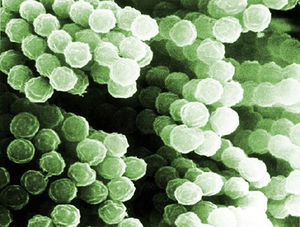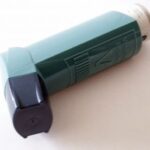Mold allergies are triggered by fungus spores that enter the body and result in miserable symptoms such as coughing, watery itchy eyes, congestion, runny nose and wheezing due to an airway that is tight and constricted. In people who already have respiratory health issues, such as those who suffer from asthma, this type of allergic response can be particularly dangerous.
Mold Allergies in Children
Nearly 40% of children who suffer from allergic rhinitis test positive for mold allergies. These children typically have a history of frequent respiratory, sinus and ear infections. Recurring and prolonged cold symptoms, lasting for more than two weeks in winter, can also be a sign of mold allergy.
Identifying a mold allergy first starts with a physician taking a history of the patient’s symptoms and performing a physical exam. Then, to more specifically diagnose the problem, a skin test or blood test may be done.
A skin prick test, typically preformed by an allergist, exposes the body to diluted amounts of common or suspected allergens. These allergens are individually applied to the skin of the arm or back in small punctures. A bump of irritated skin will result from punctures that contain the substance a patient is allergic to.
Another way to identify allergic sensitivities is with a blood test. Blood drawn is sent to a lab and analyzed to measure the immune system’s response to certain substances. Immune sensitivity is determined by the amount of certain antibodies in the blood. The body produces many different type of antibodies, each in response to a certain particle that the immune system is defending the body against. High levels of antibodies against mold would indicate an immune response to mold, an allergy.
Treatment of Mold Allergy Symptoms
Reducing the amount of mold that the patient is being exposed to is the first step to reducing allergy symptoms, but since all mold cannot be eliminated, sometimes allergies must also be treated with medication.* Typically corticosteroids are used to reduce the respiratory inflammation and tissue swelling that is part of an allergic response.
* Antihistamines may be used to block the body’s release of histamine, which is an inflammatory chemical the body produces in an immune response.
* Decongestants can reduce nasal congestion, but are typically not recommended for long-term treatment, and tend to increase blood pressure; bad news for those with hypertension.
* For severe allergies, sometimes immunotherapy is recommended. This treatment consists of a series of allergy shots that can be very effective in eliminating hay fever and many other allergies, but are not as effective in combating mold allergies.
For more information on the molds that can trigger allergies, see the Suite101 articles:
Mold Allergy: Which Fungi Cause Allergies?
Mold Allergy: Reducing the Severity of Mold Allergies
Sources
Mayo Clinic (June, 2009). “Mold Allergy.‘”
Asthma and Allergy Foundation of America (2005). “Mold Allergy.”
Huang, Shih-Wen (2009), “Mold Allergies”, MDeMedicine from MDWeb
WebMD (2009) “Mold Allergy”.
Please note: The information in this article is not to be followed as medical advice, diagnosis or treatment. Please consult with your physician or primary health practitioner for information regarding your own personal health and necessary treatments. This article originally appeared in Suite101 online magazine.




